We continuously get the same question from desert residents when conducting inspections: Which roofing material is the best for harsh desert weather? There are a variety of factors that determine such an answer. It depends on the values of the homeowner. Are style and design most-important? Is it longevity? Cost? Each type of roof has its benefits, but those benefits often come with factors that may sway a homeowner towards one direction or another.
In this post, we dive into the top roofing types and highlight some advantages and disadvantages of each.
Foam
Polyurethane foam roofs are becoming the most-popular roofing systems for desert homeowners and are widely used for commercial roofing systems as well.
Advantages
Polyurethane foam has the ability to withstand the expansion and contraction of a structure. It's lightweight, durable, and seamless. Foam roofs insulate your desert home for decades, leading to significant decreases in cooling costs. In fact, since foam roofs are capable of keeping homes cool in the summer and warmer in the winter, they help reduce reliance on utility-sourced energy, which is often produced from dirty, non-renewable sources.
Disadvantages
Foam roofs may be more expensive than traditional options. Depending on the type of coating you select, foam roofing has the potential to require semi-frequent maintenance. That said, premium coatings may be applied, reducing the need for maintenance and upkeep.
Tile
Tile roofs are, also, a popular roofing system in the Palm Desert area. Tiles can be produced from clay, concrete and sandcast. Concrete tiles are generally lower in cost than clay, but don’t last as long.
Advantages
Tile roofs can last up to 25+ years in the desert. Some tile roofs have been known to last up to 50 years. While tile roofs may last the entire duration of homeownership, the underlayment may need to be replaced every couple decades. Undamaged tiles can be re-installed and re-used. Tile roofs are also fireproof and resistant to rot. Concrete tiles are typically cooler than other roofing options, like asphalt shingles, which helps to reduce ambient temperature in attics and can help save on overall electricity costs.
Disadvantages
Tile roofs are quite heavy. Many roof structures are not strong enough to accommodate their weight. While the tiles themselves have the potential to last for decades, the underlayment will need to be replaced over the course of the lifespan of a roof. If not replaced, leaks may occur. In addition to these points, tile roofing systems can be fragile. Falling tree branches or the weight of walking on the roof can cause damage to the tiles.
Metal
Metal roofs are often used for both residential and commercial buildings. To some, they offer an appealing, modern aesthetic, accompanied by a long lifespan.
Advantages
Metal roofs perform well in desert areas and are among the longest lasting roofing materials that require the least amount of maintenance. When coated properly, metal roofs will reflect the sun and disperse heat. This helps to reduce energy costs with regards to cooling a structure. Also, most metal roofs are recyclable, adding to the eco-friendly aspects of such a roof.
Disadvantages
Metal roofs tend to cost more than other roofing systems. Metal roofs are susceptible to hail and heavy winds. While style and design are typically subjective, many people prefer the look of traditional materials such as common clay tiles.
Wood
Although wood roofs have declined in popularity in recent years, many homeowners like the aesthetic of a wood shingle roofing solution.
Advantages
Some wood roofs have a proven lifespan that can outlive other kinds of roofs (when properly maintained). Wood roofs are environmentally-friendly as well, and can be reused after being stripped from a structure.
Disadvantages
The primary disadvantage of wood roofs is that they are not fire resistant without the use of special chemical treatments. Added, they have been known to be quite expensive when compared to other roofing solutions.
Shingles
There are two types of shingles: regular 3-tab shingles and architectural shingles. On average, 3-tab shingles are slightly less expensive than the architectural shingles. 3-tab shingles are also thinner, which reduces their lifespan.
Advantages
Shingles are an affordable option for any pitched roof. They have fire-resistant properties and may combat against harsh weather conditions. Certain types of asphalt shingles are recyclable, which aids in their eco-friendly value.
Disadvantages
Some types of shingle roofs require more-frequent maintenance than other roof types. Visually, they are not as aesthetically-pleasing to most people, which may reduce the resale value of a structure.
Summary
From this post, one can see that there are numerous factors that play into the decision of selecting a type of roof. We have only scratched the surface, but are available to consult and provide a no-cost inspection for homeowners in the SoCal area that are interested in learning more and evaluating whether a new roof is needed.
To schedule a roof inspection, visit the online scheduler and a team member will be in touch.
We can, also, be reached by phone for immediate assistance by dialing 844-348-ROOF.

